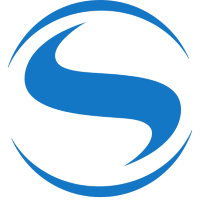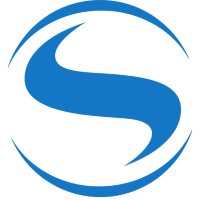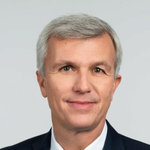
Safran SA
PAR:SAF


| US |

|
Johnson & Johnson
NYSE:JNJ
|
Pharmaceuticals
|
| US |

|
Berkshire Hathaway Inc
NYSE:BRK.A
|
Financial Services
|
| US |

|
Bank of America Corp
NYSE:BAC
|
Banking
|
| US |

|
Mastercard Inc
NYSE:MA
|
Technology
|
| US |

|
UnitedHealth Group Inc
NYSE:UNH
|
Health Care
|
| US |

|
Exxon Mobil Corp
NYSE:XOM
|
Energy
|
| US |

|
Pfizer Inc
NYSE:PFE
|
Pharmaceuticals
|
| US |

|
Palantir Technologies Inc
NYSE:PLTR
|
Technology
|
| US |

|
Nike Inc
NYSE:NKE
|
Textiles, Apparel & Luxury Goods
|
| US |

|
Visa Inc
NYSE:V
|
Technology
|
| CN |

|
Alibaba Group Holding Ltd
NYSE:BABA
|
Retail
|
| US |

|
3M Co
NYSE:MMM
|
Industrial Conglomerates
|
| US |

|
JPMorgan Chase & Co
NYSE:JPM
|
Banking
|
| US |

|
Coca-Cola Co
NYSE:KO
|
Beverages
|
| US |

|
Walmart Inc
NYSE:WMT
|
Retail
|
| US |

|
Verizon Communications Inc
NYSE:VZ
|
Telecommunication
|
Utilize notes to systematically review your investment decisions. By reflecting on past outcomes, you can discern effective strategies and identify those that underperformed. This continuous feedback loop enables you to adapt and refine your approach, optimizing for future success.
Each note serves as a learning point, offering insights into your decision-making processes. Over time, you'll accumulate a personalized database of knowledge, enhancing your ability to make informed decisions quickly and effectively.
With a comprehensive record of your investment history at your fingertips, you can compare current opportunities against past experiences. This not only bolsters your confidence but also ensures that each decision is grounded in a well-documented rationale.
Do you really want to delete this note?
This action cannot be undone.

| 52 Week Range |
158.66
228.6
|
| Price Target |
|
We'll email you a reminder when the closing price reaches EUR.
Choose the stock you wish to monitor with a price alert.

|
Johnson & Johnson
NYSE:JNJ
|
US |

|
Berkshire Hathaway Inc
NYSE:BRK.A
|
US |

|
Bank of America Corp
NYSE:BAC
|
US |

|
Mastercard Inc
NYSE:MA
|
US |

|
UnitedHealth Group Inc
NYSE:UNH
|
US |

|
Exxon Mobil Corp
NYSE:XOM
|
US |

|
Pfizer Inc
NYSE:PFE
|
US |

|
Palantir Technologies Inc
NYSE:PLTR
|
US |

|
Nike Inc
NYSE:NKE
|
US |

|
Visa Inc
NYSE:V
|
US |

|
Alibaba Group Holding Ltd
NYSE:BABA
|
CN |

|
3M Co
NYSE:MMM
|
US |

|
JPMorgan Chase & Co
NYSE:JPM
|
US |

|
Coca-Cola Co
NYSE:KO
|
US |

|
Walmart Inc
NYSE:WMT
|
US |

|
Verizon Communications Inc
NYSE:VZ
|
US |
This alert will be permanently deleted.
 Safran SA
Safran SA
Safran SA
Investor Relations
In the intricate tapestry of the aerospace and defense industry, Safran SA weaves a narrative of innovation and resilience. Originally formed from the union of Société Nationale d'Étude et de Construction de Moteurs d'Aviation and Sagem, Safran has emerged as a formidable force in the global arena. The company’s operations are an intersection of technological sophistication and manufacturing prowess, primarily concentrated in three key sectors: Aerospace Propulsion, Aircraft Equipment, and Defense. Within its Aerospace Propulsion unit, Safran collaborates with GE Aviation through the CFM International joint venture, producing some of the world’s most popular aircraft engines, such as the LEAP and CFM56. These engines are crucial to its business, driving sales through strong demand for fuel-efficient and reliable propulsion systems in both commercial and military aviation.
On the Aircraft Equipment side, Safran supplies an array of systems and components that are essential to modern aviation, including landing gear, wiring systems, and avionics. This sector complements its propulsion business, often securing contracts that create integrated solutions for aircraft manufacturers and airlines worldwide. The Defense arm, while smaller, plays a pivotal role by delivering essential systems such as optronics, avionics, and tactical drones to various military forces. Each of these sectors is underpinned by a robust commitment to research and development, ensuring Safran remains competitive through continuous innovation. The company’s financial health is largely bolstered by a balanced stream of revenues from both original equipment sales and aftermarket services, including the lucrative engine maintenance, repair, and overhaul (MRO) market, which benefits from the long operational life and widespread use of its products.

In the intricate tapestry of the aerospace and defense industry, Safran SA weaves a narrative of innovation and resilience. Originally formed from the union of Société Nationale d'Étude et de Construction de Moteurs d'Aviation and Sagem, Safran has emerged as a formidable force in the global arena. The company’s operations are an intersection of technological sophistication and manufacturing prowess, primarily concentrated in three key sectors: Aerospace Propulsion, Aircraft Equipment, and Defense. Within its Aerospace Propulsion unit, Safran collaborates with GE Aviation through the CFM International joint venture, producing some of the world’s most popular aircraft engines, such as the LEAP and CFM56. These engines are crucial to its business, driving sales through strong demand for fuel-efficient and reliable propulsion systems in both commercial and military aviation.
On the Aircraft Equipment side, Safran supplies an array of systems and components that are essential to modern aviation, including landing gear, wiring systems, and avionics. This sector complements its propulsion business, often securing contracts that create integrated solutions for aircraft manufacturers and airlines worldwide. The Defense arm, while smaller, plays a pivotal role by delivering essential systems such as optronics, avionics, and tactical drones to various military forces. Each of these sectors is underpinned by a robust commitment to research and development, ensuring Safran remains competitive through continuous innovation. The company’s financial health is largely bolstered by a balanced stream of revenues from both original equipment sales and aftermarket services, including the lucrative engine maintenance, repair, and overhaul (MRO) market, which benefits from the long operational life and widespread use of its products.
Earnings Calls
Management

Olivier Andriès is a prominent business executive, currently serving as the Chief Executive Officer (CEO) of Safran SA, a French multinational aircraft engine, rocket engine, aerospace-component, and defense company. He took on the role of CEO on January 1, 2021, succeeding Philippe Petitcolin. Born in France, Andriès boasts an impressive educational background. He is a graduate of the École Polytechnique, one of France's most prestigious engineering schools, and the École des Mines de Paris, where he further honed his engineering and management skills. Additionally, he has a Master of Science degree from Stanford University, USA. Before joining Safran, Andriès built a substantial career in the aerospace and defense sectors. He worked at the French Ministry of Industry and later joined the aerospace company Airbus, where he held several positions, including Vice President of Wide-Body Aircraft Programs. He then moved to Thales, where he was Head of the Air Systems Division and later the Senior Vice President of International Development. Andriès joined Safran in 2008, initially leading the group's strategy and transformation efforts. He was later appointed as CEO of Safran Aircraft Engines, where he played a crucial role in the development and success of major programs, including the LEAP engine program. As the CEO of Safran, Olivier Andriès is responsible for steering the company through a rapidly changing aerospace landscape, focusing on innovation, sustainability, and maintaining Safran's position as a leader in the global aerospace and defense industry. His leadership is marked by a commitment to technological advancement and a strong emphasis on environmental responsibility.

Born in France, Andriès boasts an impressive educational background. He is a graduate of the École Polytechnique, one of France's most prestigious engineering schools, and the École des Mines de Paris, where he further honed his engineering and management skills. Additionally, he has a Master of Science degree from Stanford University, USA.
Before joining Safran, Andriès built a substantial career in the aerospace and defense sectors. He worked at the French Ministry of Industry and later joined the aerospace company Airbus, where he held several positions, including Vice President of Wide-Body Aircraft Programs. He then moved to Thales, where he was Head of the Air Systems Division and later the Senior Vice President of International Development.
Andriès joined Safran in 2008, initially leading the group's strategy and transformation efforts. He was later appointed as CEO of Safran Aircraft Engines, where he played a crucial role in the development and success of major programs, including the LEAP engine program.
As the CEO of Safran, Olivier Andriès is responsible for steering the company through a rapidly changing aerospace landscape, focusing on innovation, sustainability, and maintaining Safran's position as a leader in the global aerospace and defense industry. His leadership is marked by a commitment to technological advancement and a strong emphasis on environmental responsibility.

Pascal Bantegnie serves as an executive at Safran SA, a prominent international high-technology group operating in the aviation, defense, and space sectors. With a career marked by his extensive knowledge and experience, Bantegnie has held significant roles contributing to Safran's strategic development and operational success. His work typically involves a focus on finance and investment strategies, having been involved in crucial financial planning and mergers and acquisitions that bolster Safran’s position in the global market. His leadership and expertise have been instrumental in guiding the company through various challenges and opportunities in the aerospace industry. His role often necessitates collaboration across different departments to ensure the alignment of financial objectives with Safran's broader organizational goals.

Eric Dalbies is a notable executive in the aerospace industry, currently serving as a key leader at Safran SA, a prominent French multinational company specializing in aircraft, rocket engine, aerospace-component, and security. With an engineering background, Dalbies has built a significant career in technology and project management within Safran. Serving in various strategic positions, Dalbies has taken part in driving innovation and efficiency within the company. His roles often involve overseeing complex engineering projects, ensuring quality and adherence to industry standards. Known for his leadership skills and technical expertise, Dalbies contributes to Safran's mission of advancing aerospace technology. His contributions to Safran encompass managing R&D and improving operations, which align with Safran's goals for sustainable growth and technological excellence. Through his efforts, Eric Dalbies helps maintain Safran's position as a leader in the aerospace sector.
Serving in various strategic positions, Dalbies has taken part in driving innovation and efficiency within the company. His roles often involve overseeing complex engineering projects, ensuring quality and adherence to industry standards. Known for his leadership skills and technical expertise, Dalbies contributes to Safran's mission of advancing aerospace technology.
His contributions to Safran encompass managing R&D and improving operations, which align with Safran's goals for sustainable growth and technological excellence. Through his efforts, Eric Dalbies helps maintain Safran's position as a leader in the aerospace sector.
Frédéric Verger is an accomplished executive who has held a significant position at Safran SA, a leading international high-technology group operating in the aviation, defense, and space markets. He serves as the Chief Digital and Information Officer at Safran, responsible for driving the company’s digital transformation and overseeing its information systems strategy. Verger's role includes managing the integration of digital technologies to enhance operational efficiency and innovation, underscoring Safran's commitment to digital advancement. With a solid background in both digital strategy and IT management, Verger has been instrumental in steering Safran's digital initiatives. His expertise helps in aligning digital efforts with the broader strategic goals of the organization. Before joining Safran, he held various leadership roles in the technology and information sectors, allowing him to bring a wealth of experience to his position. Verger's strategic oversight is pivotal in ensuring that Safran's digital infrastructure supports its business objectives and adapts to the evolving technological landscape.
With a solid background in both digital strategy and IT management, Verger has been instrumental in steering Safran's digital initiatives. His expertise helps in aligning digital efforts with the broader strategic goals of the organization. Before joining Safran, he held various leadership roles in the technology and information sectors, allowing him to bring a wealth of experience to his position. Verger's strategic oversight is pivotal in ensuring that Safran's digital infrastructure supports its business objectives and adapts to the evolving technological landscape.
Francis Gaillard is a notable executive at Safran SA, a leading international high-technology group operating in the aviation, defense, and space markets. With a background in engineering and business management, he has held various positions within the company, contributing significantly to its success. Gaillard is recognized for his expertise in strategic development and operational management, playing a pivotal role in enhancing Safran's market position. His leadership skills and innovative approach have been instrumental in driving the company's growth and expanding its global footprint.
Florent Defretin is an executive known for his role with Safran SA, a leading international high-technology group and tier-1 supplier of systems and equipment in the aerospace and defense markets. With years of experience in the aerospace sector, Defretin has contributed significantly to the company's advancement in various programs and initiatives. His expertise lies in managing complex projects and driving innovation within the industry. At Safran, he has been involved in numerous strategic operations that enhance the company's competitive edge, focusing on sustainable practices and cutting-edge technological solutions. His leadership and knowledge of the market dynamics have been influential in steering Safran's growth and maintaining its position as a key player in the global aerospace sector.
Coralie Bouscasse is the Executive Vice President and Group General Counsel of Safran SA, a leading international high-technology group that operates in the aviation, defense, and space markets. In her role, she is responsible for overseeing the legal affairs of the company, including ensuring compliance with regulations and managing legal risks. Her significant experience in corporate law and governance, particularly in high-tech industries, supports Safran's strategic and operational needs. She has been instrumental in navigating complex legal landscapes and contributing to the company's global growth and innovation initiatives. Her leadership is known for reinforcing strong ethical practices and fostering an inclusive workplace culture.
Kate Philipps serves as an executive at Safran SA, a prominent international high-technology group operating in the aviation, defense, and space markets. At Safran, she holds the significant role of Executive Vice President, Corporate Communications, a position she has managed since October 1, 2018. In this capacity, she is responsible for the company's global communication strategy, enhancing the organization’s visibility, and ensuring coherent messaging across various platforms to bolster Safran’s reputation and engagement with stakeholders. Her portfolio often includes overseeing media relations, branding, internal communications, and digital communication strategies. Prior to her role at Safran, Kate Philipps gained extensive experience in strategic communication roles within different industries, which equipped her with the expertise to effectively manage and lead corporate communications at Safran.
I'm sorry, but I couldn't find specific information about Mr. Stéphane Dubois from Safran SA. It's possible that he may not be a prominent public figure or executive within the company, or there may be limited publicly available information about him. If you have any other questions or need information about Safran SA or its known leadership, feel free to ask!
Franck Saudo is a prominent figure in the aerospace industry, serving as an executive at Safran SA, a leading international high-technology group operating in the aviation, defense, and space markets. Saudo has a background that combines engineering expertise with extensive management experience, which has been instrumental in his leadership roles within the company. Saudo joined Safran in 2011, where he has held various positions, progressively taking on more responsibility. Before becoming a key executive at Safran, he gained significant experience in the industry, which laid the groundwork for his impactful career at the company. One of his significant roles was as CEO of Safran Helicopter Engines, where he was responsible for overseeing operations, strategic direction, and management of the division. Under his leadership, the division achieved notable advancements and fostered innovation in helicopter engine technology and services. His educational background includes engineering and business administration, providing a strong foundation for his strategic and operational roles at Safran. Saudo's leadership style is known for emphasizing operational excellence, innovation, and customer satisfaction, aligning with Safran's focus on high-quality, cutting-edge technology solutions for its clients.
Saudo joined Safran in 2011, where he has held various positions, progressively taking on more responsibility. Before becoming a key executive at Safran, he gained significant experience in the industry, which laid the groundwork for his impactful career at the company.
One of his significant roles was as CEO of Safran Helicopter Engines, where he was responsible for overseeing operations, strategic direction, and management of the division. Under his leadership, the division achieved notable advancements and fostered innovation in helicopter engine technology and services.
His educational background includes engineering and business administration, providing a strong foundation for his strategic and operational roles at Safran. Saudo's leadership style is known for emphasizing operational excellence, innovation, and customer satisfaction, aligning with Safran's focus on high-quality, cutting-edge technology solutions for its clients.





























 You don't have any saved screeners yet
You don't have any saved screeners yet
